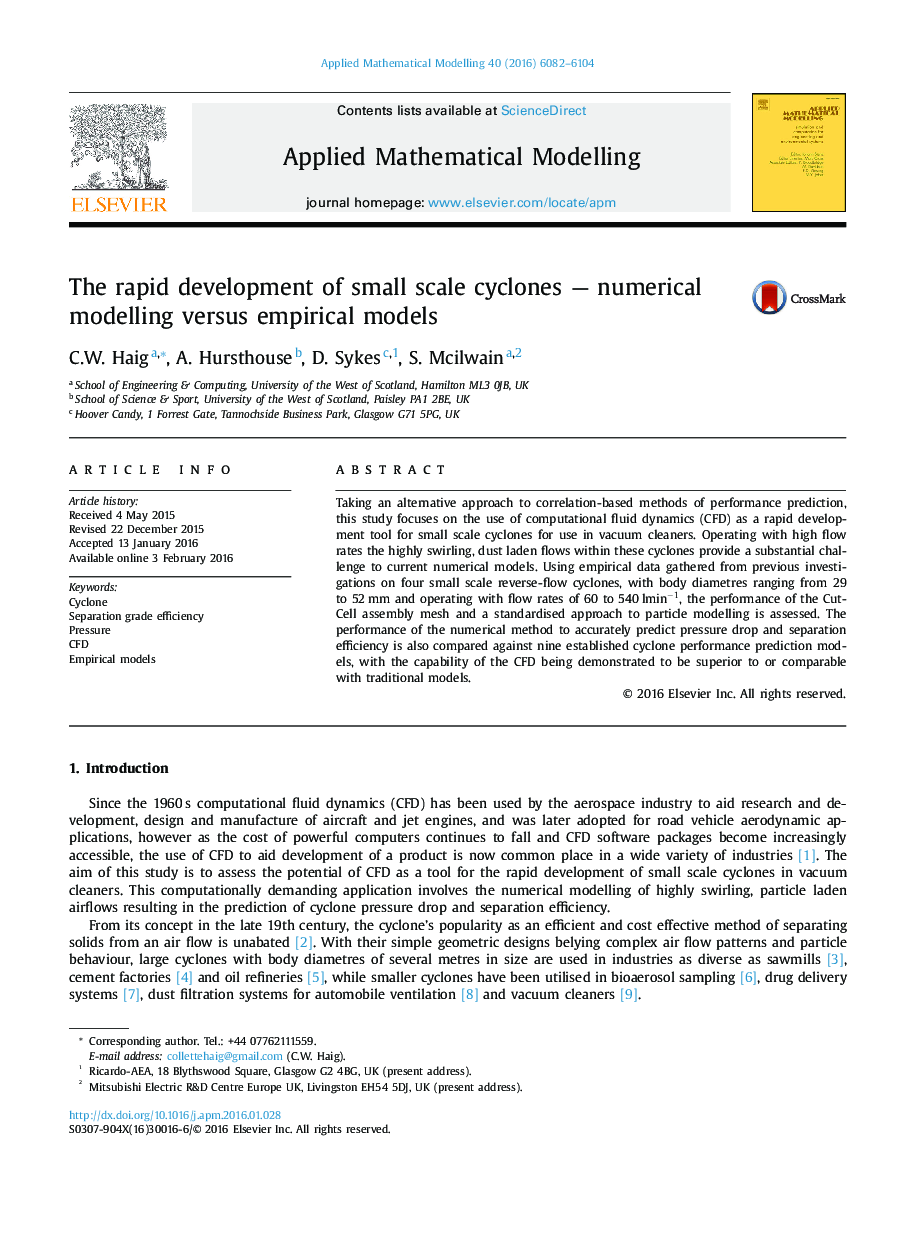| Article ID | Journal | Published Year | Pages | File Type |
|---|---|---|---|---|
| 1702712 | Applied Mathematical Modelling | 2016 | 23 Pages |
•Assessment of CFD as a rapid development technique for cyclones.•Empirical data used from four cyclones with flow rates ranging from 60 to 540 lmin−1.•CFD pressure drop predictions compared with results from five empirical models.•CFD predictions for separation grade efficiency compared with four empirical models.•CFD predictions comparable with empirical models despite use of CutCell assembly mesh.
Taking an alternative approach to correlation-based methods of performance prediction, this study focuses on the use of computational fluid dynamics (CFD) as a rapid development tool for small scale cyclones for use in vacuum cleaners. Operating with high flow rates the highly swirling, dust laden flows within these cyclones provide a substantial challenge to current numerical models. Using empirical data gathered from previous investigations on four small scale reverse-flow cyclones, with body diametres ranging from 29 to 52 mm and operating with flow rates of 60 to 540 lmin−1, the performance of the CutCell assembly mesh and a standardised approach to particle modelling is assessed. The performance of the numerical method to accurately predict pressure drop and separation efficiency is also compared against nine established cyclone performance prediction models, with the capability of the CFD being demonstrated to be superior to or comparable with traditional models.
